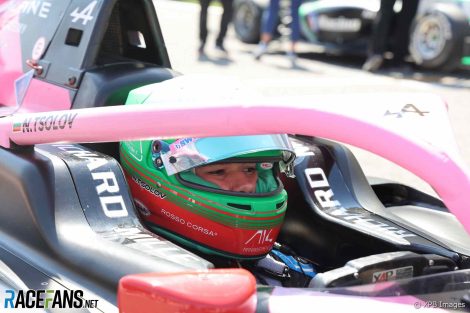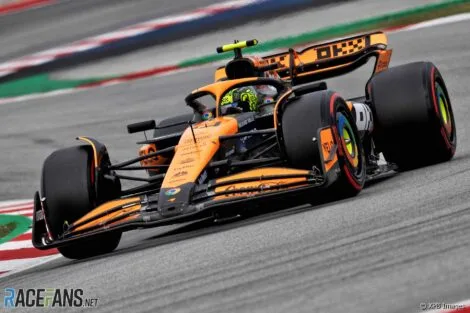The final minutes of final practice at the Circuit de Catalunya unexpectedly descended into road rage.
First Lance Stroll, then Charles Leclerc lost their heads after being held up by rivals at turn five. While drivers in their position are often content to fire off a few expletives on the radio and then press on, both took it a step too far.
Stroll squeezed Lewis Hamilton, after being held up by the Mercedes, at the exit of turn five and the pair made contact. This happened at relatively low-speed – Formula One Management’s data indicates it was no more than 60kph – and the damage was negligible.
Leclerc’s reaction was more surprising. After catching a dawdling Lando Norris at an inconvenient spot, the Ferrari driver swerved at the McLaren as they rounded turn six, provoking contact which damaged his rival’s front wing endplate.
This was a riskier move than Stroll’s, as Leclerc’s speed was visibly higher. He accelerated to around 246kph as he closed on Norris through the kink of turn six. Instead of following the racing line to the right of the circuit he continued to turn left, while braking, and the cars converged. At some point before Leclerc’s speed dropped to a minimum of around 126kph, they made contact.
It was striking that the stewards’ verdicts on both incidents made no mention of the speeds involved as they are clearly significant factors in how dangerous the incidents were.
The stewards’ judgements related the obvious similarities about the two incidents: Both drivers were unhappy at being held up by their rivals and both chose to express this by driving at the other cars.
Advert | Become a RaceFans supporter and
Both drivers avoided a meaningful penalty, such as a grid drop, and received reprimands instead. In both cases the stewards ruled the drivers had only acted “erratically”, not dangerously.

But this was the wrong test to apply. In both cases collisions had occured and the instigators were those who lost their temper and pointed their cars at one of their rivals.
The stewards must be unequivocal in stating that this is never acceptable. But too often they shy away from issuing sufficiently strict penalties for collisions which only happened because one driver chose to point their car at another. And not even in a competitive session, but during…
Click Here to Read the Full Original Article at RaceFans…

